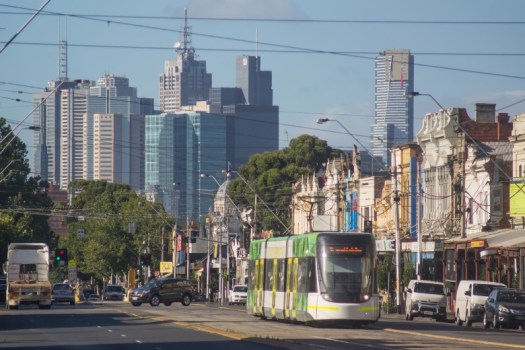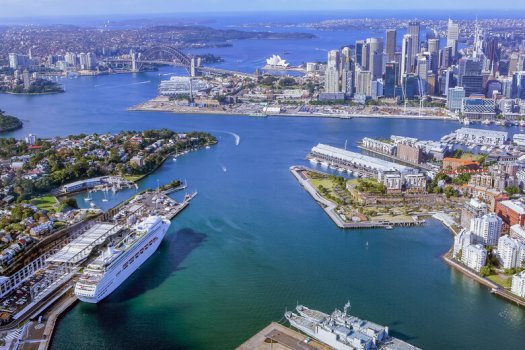
A new report by three peak road, rail and infrastructure bodies provides a roadmap for decarbonising the nation’s transport sector.

The Journey to Net Zero report , put together in by the Australasian Railway Association (ARA), Infrastructure Sustainability Council (ISC) and Roads Australia (RA), offers what it says is an opportunity to collaborate on improving the impact the transport industry has on the environment and climate.
The report, authored by KPMG and sponsored by Arup, has 46 recommendations to accelerate decarbonisation in the sector and analyses local and global examples of leading best practice.
Recommendations include:
- A national, strategic approach to the transport sector and its infratstructure
- Investment in initiatives for an efficient and sustainable transport system at state and federal levels
- Embedding good governance and accountability in the planning, construction and operational stages of transport infrastructure projects
- Enabling capacity building and education, and a culture of collaboration in procurement
- Leverage technology to optimise asset design to assist the transition to a low carbon economy
Collaboration
“Governments can make significant impact through policies and as major transport infrastructure and service providers,” Kerryn Coker, Arup Co-Chair in Australasia sayus.
“We see this report as a catalyst for more sustainable public and private transport ecosystems with enduring social benefits.”
Australia’s National Greenhouse Gas Inventory estimates that the transport sector contributed to 18.3 per cent of Australia’s emissions in 2020.
“Our reliance on the private motor vehicle has influenced the way we have designed our cities and our transport networks,” the report says.
“Most modern cities have been built to serve cars, not people, and we are not reaching a point where population growth, congestion, resource use, and the associated environmental impacts mean we cannot continue with ‘Business as usual’.’
Placemaking and technology
The first step to a sustainable transport network is placemaking, according to the report.
This involves a multi-faceted approach to planning, designing and managing the spaces where people work, live and play.
“Successful placemaking can limit the need for people to travel long distances to access work, education, healthcare and other services,” the report says.
“A national approach to placemaking is required, first and foremost, and is best planned and implemented at a local level with learnings shared across geographies.”
The greatest potential for emissions reduction is at the planning stage, the report says.
“Government and industry need to work together from the onset – at the business case and investment decision stage,” the report said.
“Alongside this collaborative approach, greater governance, accountability and transparency is needed for decisions relation to our transport infrastructure.”
Innovative technology solutions can play a key role in decarbonising the transport sector.
“We need to adopt and promote innovative technology solutions that optimise both asset design, construction, operation and enabled solutions so that new solutions can be deployed,” the report says.
National approach
The report recommends that a national approach to the transport sector and its infrastructure be created, with a coordinated approach to place making.
This should include a national measurement framework to ensure that progress towards net-zero is accurately tracked and measured.
Regulations across states for road and rails should also be coordinated to reduce red tape when transitioning fleets to zero emissions, the report said.
A coordinated planning approach by governments will also ensure that all projects are balanced and can be delivered by the resources available to industry.
“Federal and state governments require bold policy changes and significant investment to drive innovation in both the energy and transport sector,” the report says.
“It is not only the transport systems that are required to be designed (to) meet low carbon commitments.”
Comment below to have your say on this story.
If you have a news story or tip-off, get in touch at editorial@governmentnews.com.au.
Sign up to the Government News newsletter



Both the State and Federal governments have all but ignored the plight of rural and regional towns and how they will be affected once the fuel runs out. In NSW, passenger train services were closed on several regional lines back in 1974 because back then they were too costly to maintain. But when that happened, all the towns along those lines began to die. What needs to happen is for the current State and Federal governments to embrace the revitalisation of these regional passenger train services as an affordable alternative to buying EVs. Because the majority of people living in these towns won’t be able to afford to buy new EVs, especially pensioners or young people that need to commute to jobs or study at Uni or TAFE. And even if they could scrape together $40k (for the cheapest EV out there), the batteries in these vehicles run out of puff after just 50km. Now that’s not viable, because many of these towns are over 100kms or more apart and I can’t see dozens of recharging stations being set up in the middle of paddocks. So, the logical solution is to reinstate as many regional passenger rail services as possible using new state-of-the art hybrid rail motors which would use solar power to run the internal electrics, (like lights, air-con and free wi-fi) and bio-diesel or li-ion batteries to drive the single-carriage engines. This would also see many people swap their already outdated petrol-driven cars for annual train tickets and take a lot more vehicles off our dangerous, pot-holed roads. So, it’s a win-win for everyone. All that is needed is for someone to stand up in Parliament and introduce a bill to reinstate regional public transport services in NSW. And I hope that happens soon and before people in these towns become literally stranded because of the government’s apathy and inaction.
Having reason to commute to Kandos from Sydney I have been able to drive, car share and hire vehicles, catch replacement bus service from Lithgow, and on one occasion catch a tourist train from Central. Of all the journeys the rail from Central was the most relaxed and enjoyable. The rail motor option above is a brilliant alternative to any form of road based transport. Lamenting the loss of so many branch lines only to be replaced with more B-Doubles to blight rural roads.